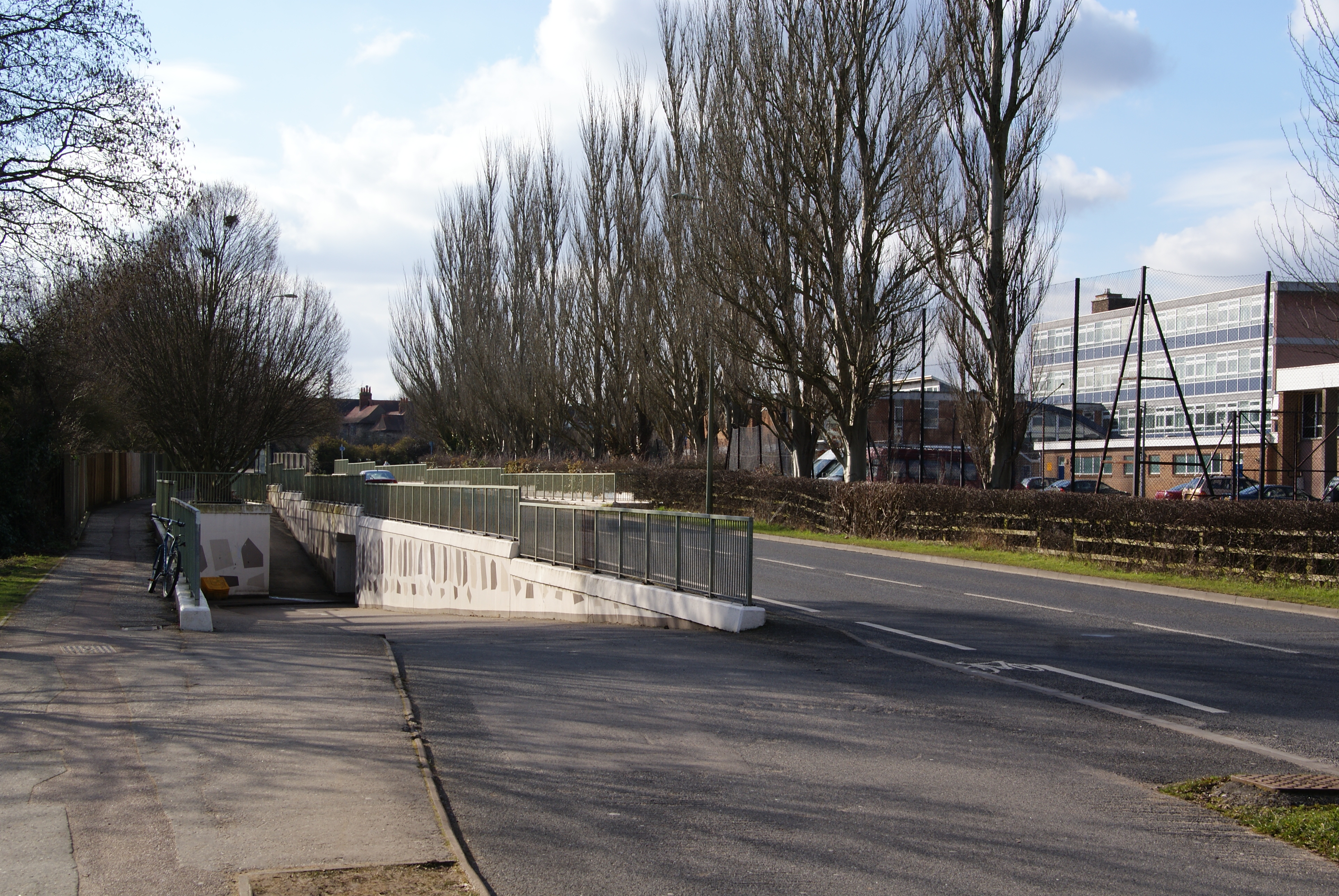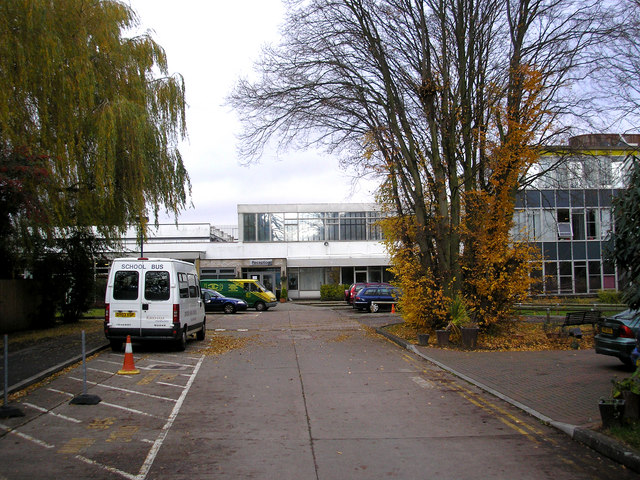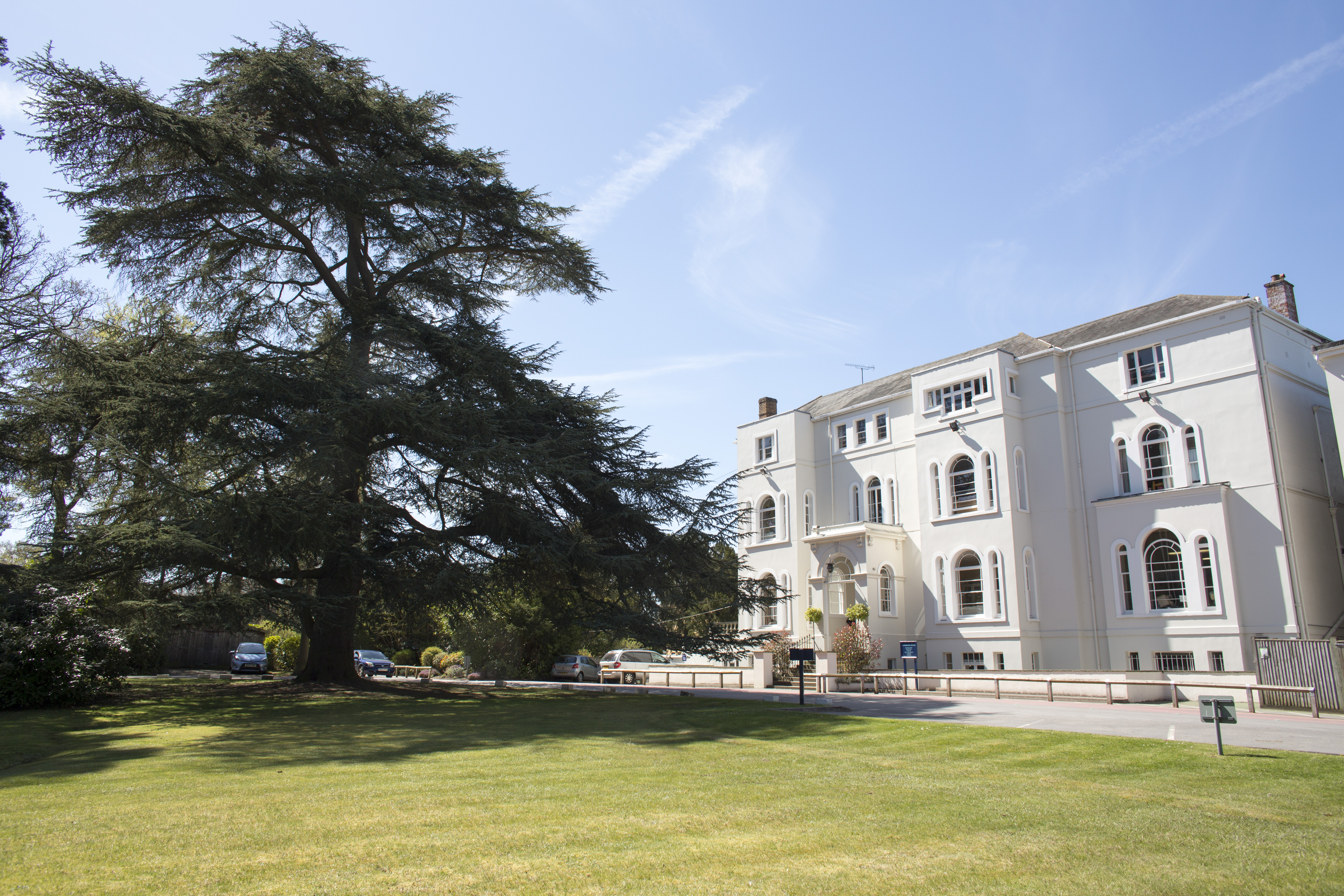|
North Oxford
North Oxford is a suburban part of the city of Oxford in England. It was owned for many centuries largely by St John's College, Oxford and many of the area's Victorian houses were initially sold on leasehold by the College. Overview The leafy roads of Woodstock Road to the west and Banbury Road to the east (leading to Woodstock and Banbury respectively) run north-south through the area, meeting at their southern ends to become St Giles. North Oxford is noted for its schools, especially its private schools. These include the Dragon School and Summer Fields (formerly Summerfield), which are preparatory schools, and St Edward's School and the Oxford High School for Girls, which are secondary schools, as well as St. Clare's, Oxford, an international sixth form college which is the longest provider of the International Baccalaureate Diploma in England (source ISA) Geography The boundary of "North Oxford" is not exactly defined, but the original area developed by St John's C ... [...More Info...] [...Related Items...] OR: [Wikipedia] [Google] [Baidu] |
Park Town, Oxford
Park Town is a small residential area in central North Oxford, a suburb of Oxford, England. It was one of the earliest planned suburban developments in the area and most of the houses are Grade II listed. History Samuel Lipscomb Seckham (1827–1900) developed the houses in the main crescent in 1853–54, with Bath stone front elevations, and the west-facing crescent with an elevated pavement known as "The Terrace" in 1854–55. The Park Town Estate Company was formed in September 1857 through Seckham's efforts. Many of the houses and gardens in Park Town were originally surrounded by ornamental iron railings. Those for the detached houses were removed for war use in the Second World War but some have been restored. Location Park Town includes two crescents of town houses, surrounding communal gardens and a number of larger villas. To the west is Banbury Road with Canterbury Road on the opposite side and to the east is the Dragon School. St Anne's College has student accomm ... [...More Info...] [...Related Items...] OR: [Wikipedia] [Google] [Baidu] |
Banbury
Banbury is a historic market town on the River Cherwell in Oxfordshire, South East England. It had a population of 54,335 at the 2021 Census. Banbury is a significant commercial and retail centre for the surrounding area of north Oxfordshire and southern parts of Warwickshire and Northamptonshire which are predominantly rural. Banbury's main industries are motorsport, car components, electrical goods, plastics, food processing and printing. Banbury is home to the world's largest coffee-processing facility (Jacobs Douwe Egberts), built in 1964. The town is famed for Banbury cakes, a spiced sweet pastry dish. Banbury is located north-west of London, south-east of Birmingham, south-east of Coventry and north-west of Oxford. History Toponymy The name Banbury may derive from "Banna", a Saxon chieftain said to have built a stockade there in the 6th century (or possibly a byname from ang, bana meaning ''felon'', ''murderer''), and / meaning ''settlement''. In Anglo Saxon i ... [...More Info...] [...Related Items...] OR: [Wikipedia] [Google] [Baidu] |
Norham Manor
The Norham Manor estate is a residential suburb in Oxford, England. It is part of central North Oxford. To the north is Park Town with its crescents, to the east is the River Cherwell, to the south are the University Parks and to the west is Walton Manor, on the other side of Banbury Road. The architect William Wilkinson laid out the estate in the 1860s on land owned by St John's College, Oxford. The houses are large Victorian villas, many in Italianate and Gothic Revival styles. Wilkinson himself designed several of them, notably in Norham Gardens (built 1860–70).Sherwood & Pevsner, 1974, page 318 Others were designed by Charles Buckeridge (built 1862–66) and Frederick Codd. Although originally intended as a residential area, Norham Gardens has hosted a number of educational institutions. Lady Margaret Hall, one of the University of Oxford's formerly women-only colleges, lies to the east of Norham Manor at the end of Norham Gardens and on the River Cherwell. Further nort ... [...More Info...] [...Related Items...] OR: [Wikipedia] [Google] [Baidu] |
Summertown, Oxford
Summertown in North Oxford is a suburb of Oxford, England. Summertown is a one-mile square residential area, north of St Giles, the boulevard leading out of Oxford's city centre. Summertown is home to several independent schools and the city's most expensive houses. On both sides of Banbury Road are Summertown's popular shops. There is also a smaller street of shops and restaurants, South Parade, that links Banbury Road and Woodstock Road. Summertown is home to much of Oxford's broadcast media. BBC Radio Oxford and the BBC Television's Oxford studios are on Banbury Road. Start-ups also have an increasing presence on the parade, such as Brainomix and Passle. The studios for JACK FM, Glide FM, and Six TV Oxford (no longer broadcasting) are on Woodstock Road. History Most of North Oxford came into being as a result of the revolutionary decision by the university to permit college fellows to marry and live in real houses, as opposed to rooms in college. Large houses were built o ... [...More Info...] [...Related Items...] OR: [Wikipedia] [Google] [Baidu] |
Marston Ferry Road
Marston Ferry Road is a link road in north Oxford, England. It is named after the ferry that used to cross the River Cherwell at the village of Marston from at least 1279. The road links the Banbury Road in North Oxford just south of Summertown, continuing as Moreton Road to the Woodstock Road, with Cherwell Drive in Marston, continuing as Headley Way to Headington to the southeast. It is a modern link road with a bridge over the River Cherwell about halfway along, opened on 12 November 1971. As the name implies, there was previously a ferry over the river. This latterly consisted of a punt a little to the north that could be pulled from one bank to the other using a tow rope, and carried pedestrians and bicycles only. The link road was constructed in 1971. At the eastern end is Cherwell School. Oxford High School (on Belbroughton Road) is to the south. There are a number of sports fields and facilities in the vicinity. For example, the Oxford Cavaliers play rugby a ... [...More Info...] [...Related Items...] OR: [Wikipedia] [Google] [Baidu] |
Staverton Road
Staverton Road is a residential road in North Oxford, England. Location The road runs east–west with a gentle curve halfway along. At the western end of the road is a junction with Woodstock Road (A4144) and at the eastern end is a junction with Banbury Road (A4165), the two major arterial roads out of Oxford to the north. Opposite slightly to the north at the western end is Frenchay Road. Opposite slightly to the south at the eastern end is Belbroughton Road. Parallel to the south is Rawlinson Road and to the north is Lathbury Road. It forms the approximate northern boundary of the original North Oxford development by St John's College, Oxford, along with Frenchay Road to the west and Marston Ferry Road to the east. Stavertonia "Stavertonia" (aka Stavs and formerly Stavers), or the ''University College Annexe'', a student accommodation complex of buildings for University College, Oxford, is located south of the road, largely built from 1967. The new buildings were designe ... [...More Info...] [...Related Items...] OR: [Wikipedia] [Google] [Baidu] |
Frenchay Road
Frenchay Road is a residential road in Walton Manor, North Oxford, England. The oldest part of the road runs east–west. At the eastern end is a junction with Woodstock Road (A4144), a major arterial road out of Oxford to the north. Opposite and slightly to the south is Staverton Road. Chalfont Road leads south from halfway along the original part of the road. To the west is a junction with Bainton Road to the north and Hayfield Road to the south. The road continued over the Frenchay Road Bridge on the Oxford Canal, formerly to commercial premises by the railway line. More recently the road has been extended to the west of the canal with a bend to the north and newer residential development, The Waterways housing estate dating from 2000 to 2006, doubling the length of the road. Immediately to the southwest of Frenchay Road Bridge on the canal is the entrance to the Trap Grounds nature reserve. All the original houses were designed by the leading North Oxford architect H ... [...More Info...] [...Related Items...] OR: [Wikipedia] [Google] [Baidu] |
St Giles', Oxford
St Giles' is a wide boulevard leading north from the centre of Oxford, England. At its northern end, the road divides into Woodstock Road to the left and Banbury Road to the right, both major roads through North Oxford. At the southern end, the road continues as Magdalen Street at the junction with Beaumont Street to the west. Also to the west halfway along the street is Pusey Street. Like the rest of North Oxford, much of St Giles' is owned by St John's College. Church At the northern end of St Giles' is St Giles' Church, whose churchyard includes the main War Memorial. The church originates from the 12th century. Other buildings and structures Working from north to south, on the east side are the Lamb & Flag public house (formerly a coaching inn), St John's College, the Oxford Internet Institute (No 1 St Giles'), Balliol College, and Trinity College. On the west side are the International Study Centre of d'Overbroeck's College, St Benet's Hall, the Theology F ... [...More Info...] [...Related Items...] OR: [Wikipedia] [Google] [Baidu] |
Secondary Schools
A secondary school describes an institution that provides secondary education and also usually includes the building where this takes place. Some secondary schools provide both '' lower secondary education'' (ages 11 to 14) and ''upper secondary education'' (ages 14 to 18), i.e., both levels 2 and 3 of the ISCED scale, but these can also be provided in separate schools. In the US, the secondary education system has separate middle schools and high schools. In the UK, most state schools and privately-funded schools accommodate pupils between the ages of 11–16 or 11–18; some UK private schools, i.e. public schools, admit pupils between the ages of 13 and 18. Secondary schools follow on from primary schools and prepare for vocational or tertiary education. Attendance is usually compulsory for students until age 16. The organisations, buildings, and terminology are more or less unique in each country. Levels of education In the ISCED 2011 education scale levels 2 and 3 c ... [...More Info...] [...Related Items...] OR: [Wikipedia] [Google] [Baidu] |
Oxford High School (Oxford)
Oxford High School is an independent day school for girls in Oxford, England. It was founded by the Girls' Day School Trust in 1875, making it the city's oldest girls' school. History Oxford High School was opened on 3 November 1875, with twenty-nine girls and three teachers under headmistress Ada Benson, at the Judge's Lodgings (St Giles' House) at 16 St Giles', central Oxford.St Giles' House (Judge's Lodgings), 16 St Giles' Street, Oxford (where OHS was founded). It was the 9th school opened by the . Pupils were given a holiday when the |
St Edward's School, Oxford
St Edward's School is a public school (English independent day and boarding school) in Oxford, England. It is known informally as 'Teddies'. Approximately sixty pupils live in each of its thirteen houses. The school is a member of the Rugby Group, the Headmasters' and Headmistresses' Conference, and the Oxfordshire Independent and State School Partnership. Termly fees in 2021/2022 are £13,489 for boarding and £10,794 for day pupils. The school is also affiliated to the Church of England. The school teaches the GCSE, A Level and International Baccalaureate (IB) qualifications. The sixth form is split evenly between pupils studying A Levels and the IB Diploma. History The school was founded in 1863 by Thomas Chamberlain, student of Christ Church, Oxford and vicar of St Thomas the Martyr's Church, Oxford. The original school building was Mackworth Hall, which then stood on New Inn Hall Street in central Oxford. In 1873, after a storm damaged the school buildings and in antic ... [...More Info...] [...Related Items...] OR: [Wikipedia] [Google] [Baidu] |
Preparatory School (UK)
A preparatory school (or, shortened: prep school) in the United Kingdom is a fee-charging independent primary school that caters for children up to approximately the age of 13. The term "preparatory school" is used as it ''prepares'' the children for the Common Entrance Examination in order to secure a place at an independent secondary school, typically one of the English public schools. They are also preferred by some parents in the hope of getting their child into a state selective grammar school. Most prep schools are inspected by the Independent Schools Inspectorate, which is overseen by Ofsted on behalf of the Department for Education. Overview Boys' prep schools are generally for 8-13 year-olds, who are prepared for the Common Entrance Examination, the key to entry into many secondary independent schools. Before the age of 7 or 8, the term "pre-prep school" is used. Girls' independent schools in England tend to follow the age ranges of state schools more closely than th ... [...More Info...] [...Related Items...] OR: [Wikipedia] [Google] [Baidu] |







